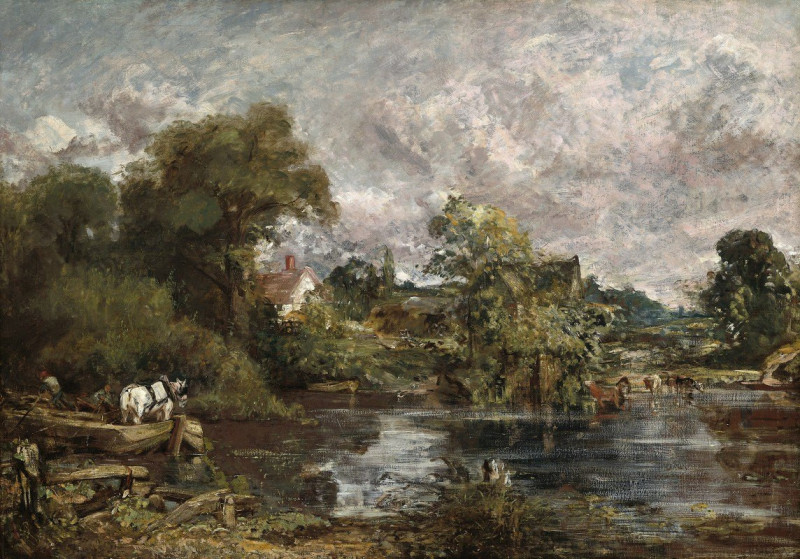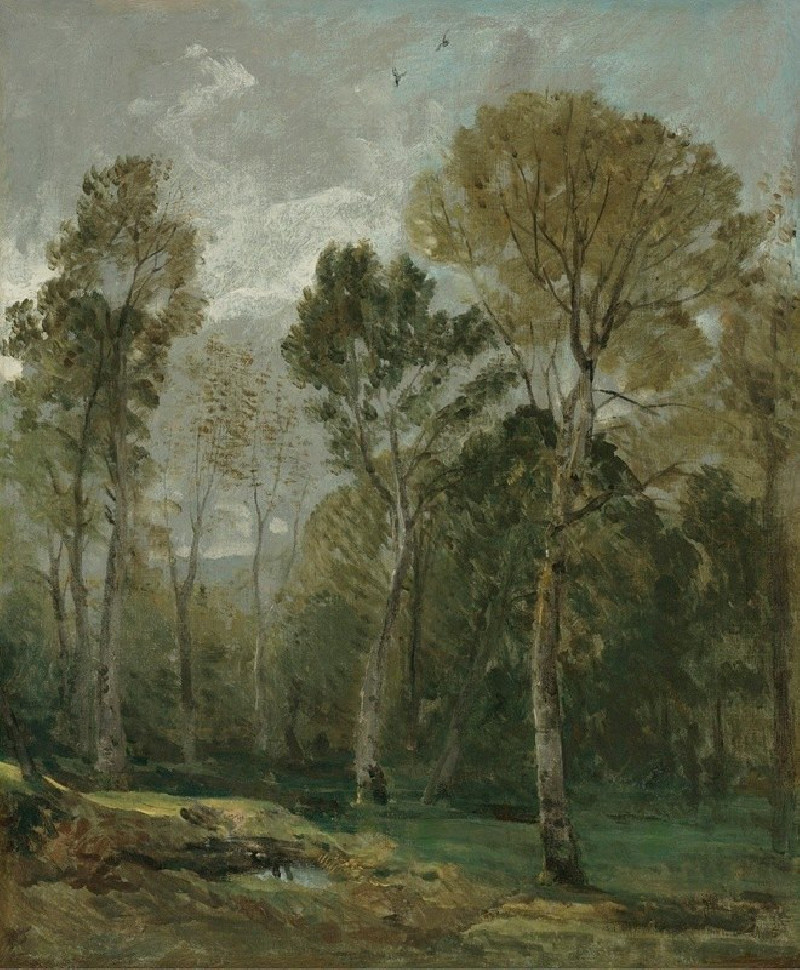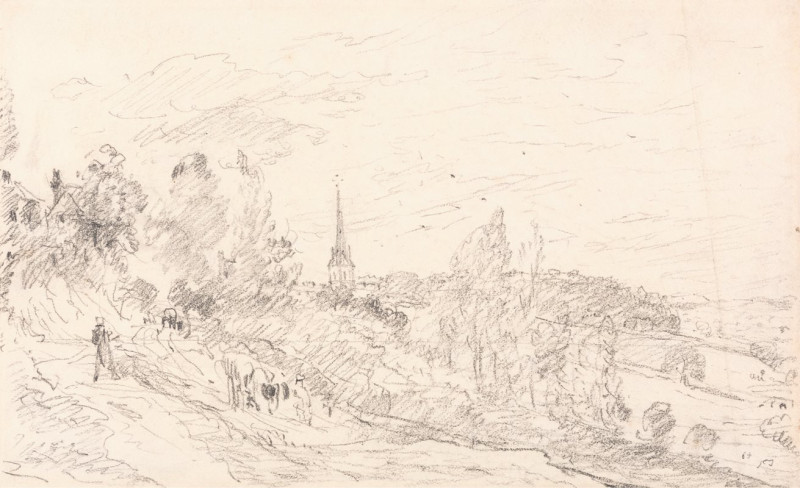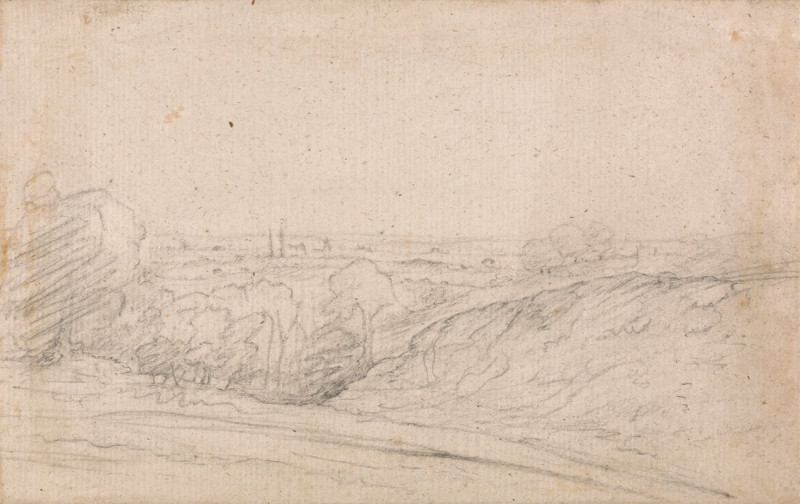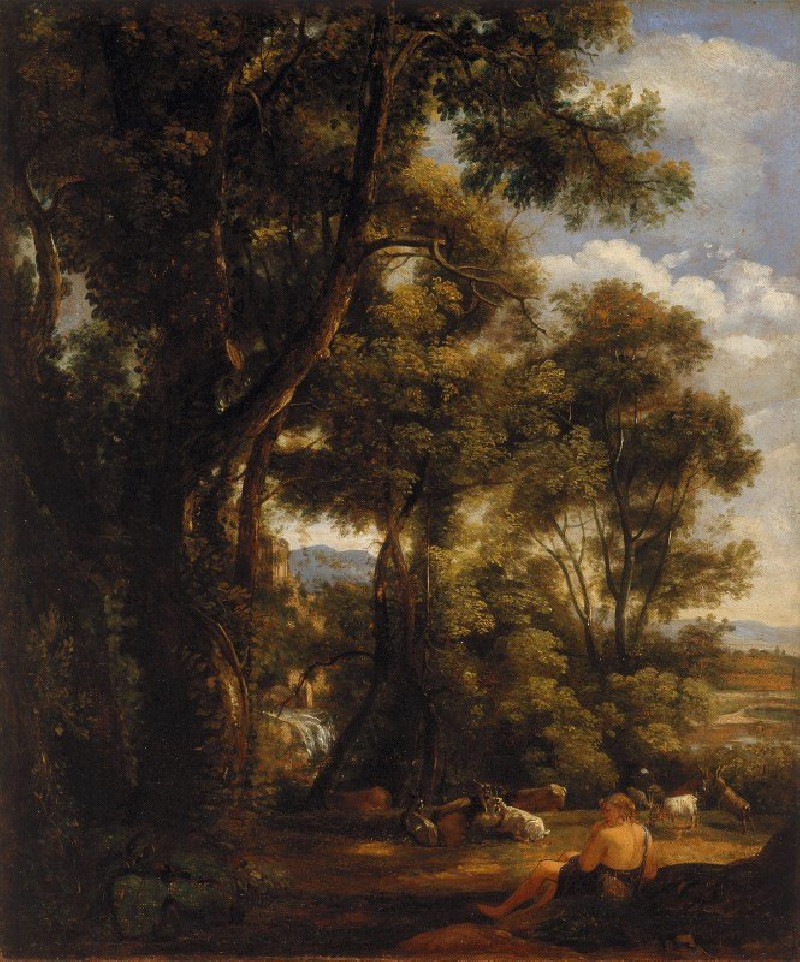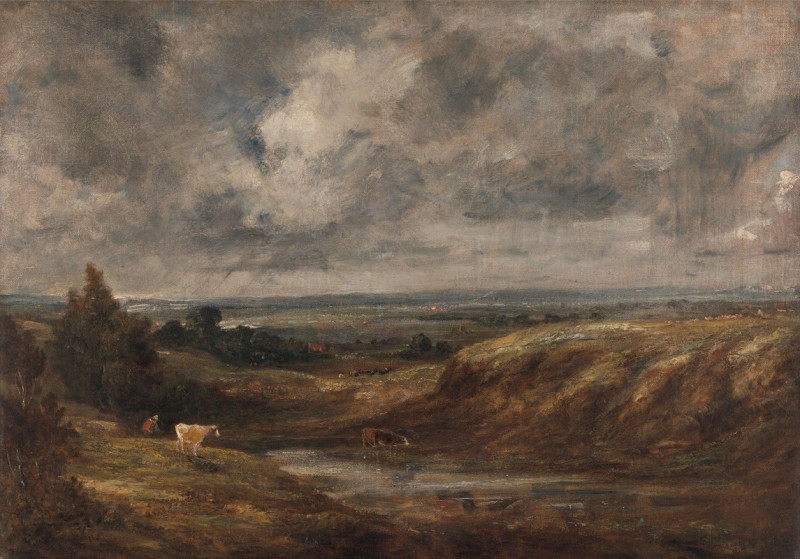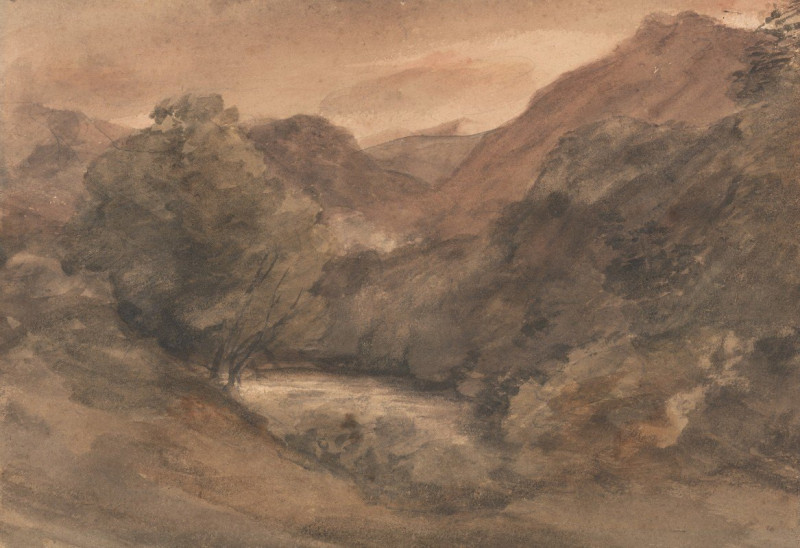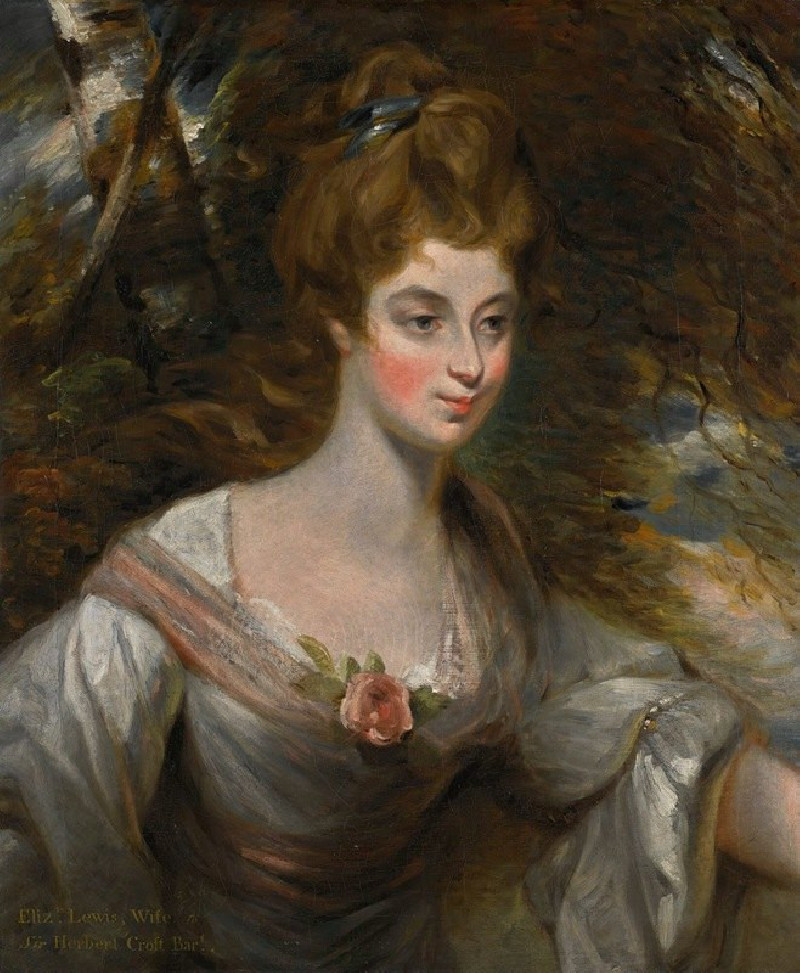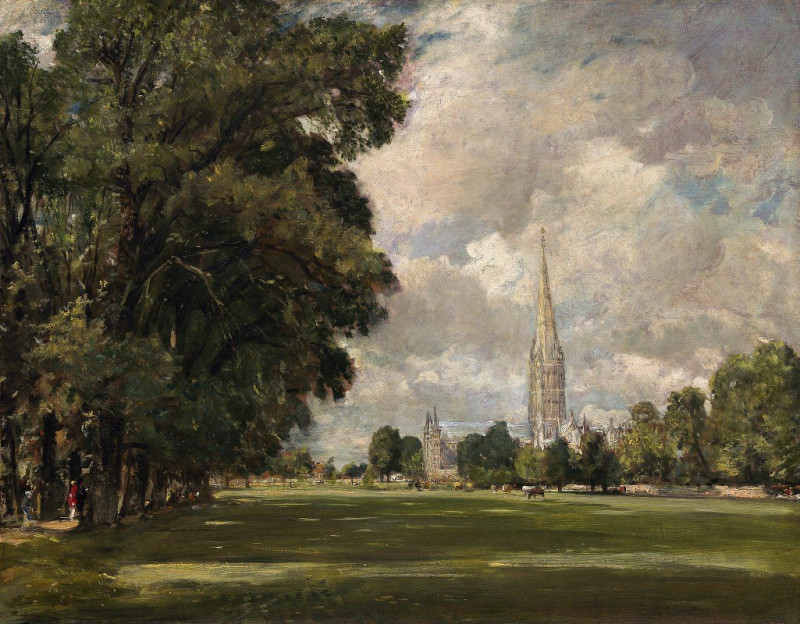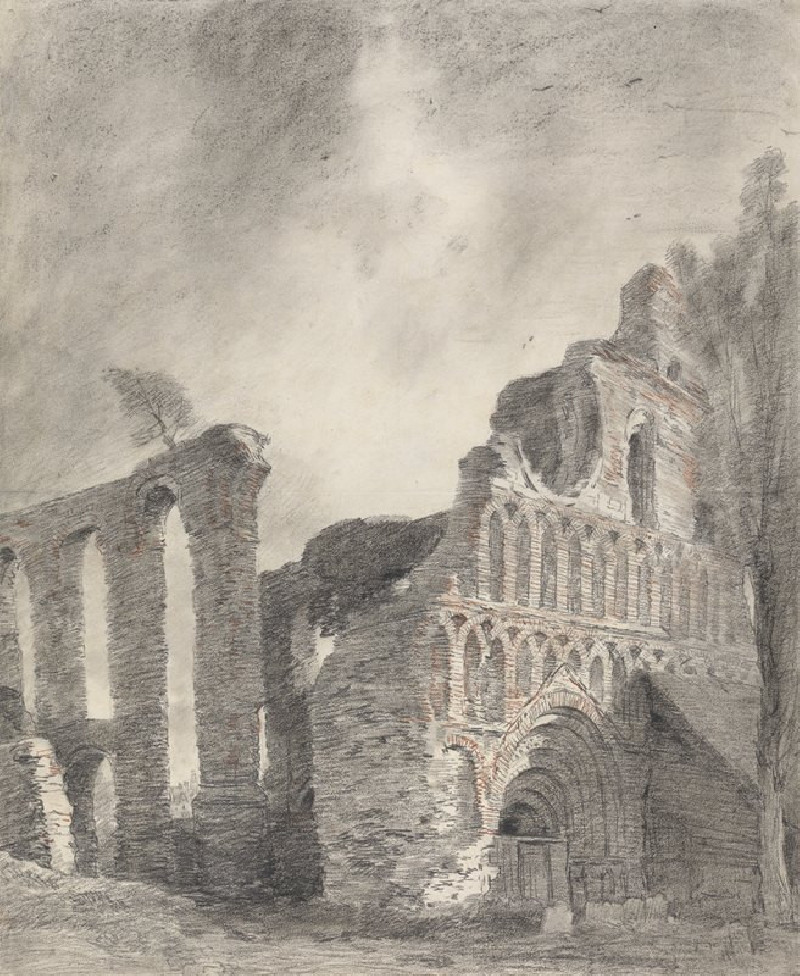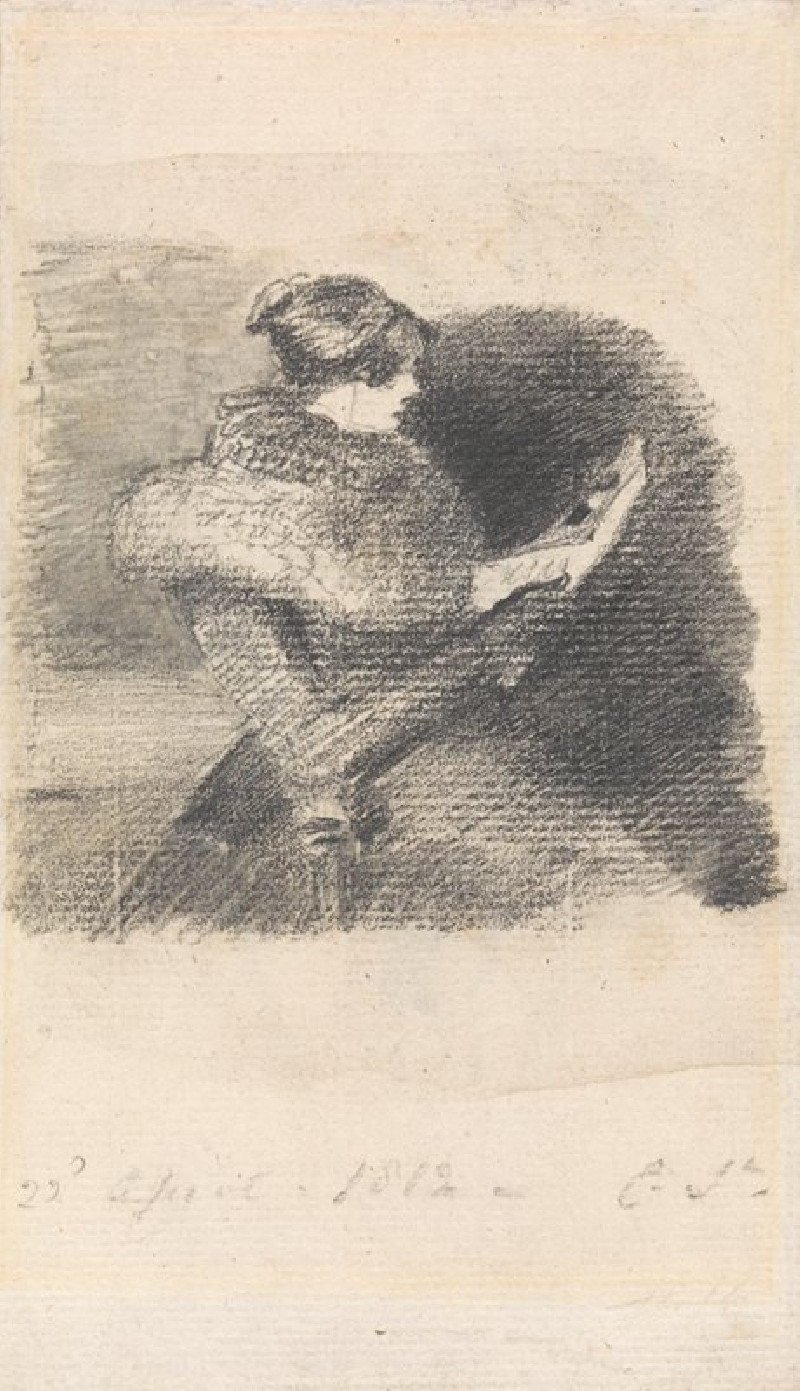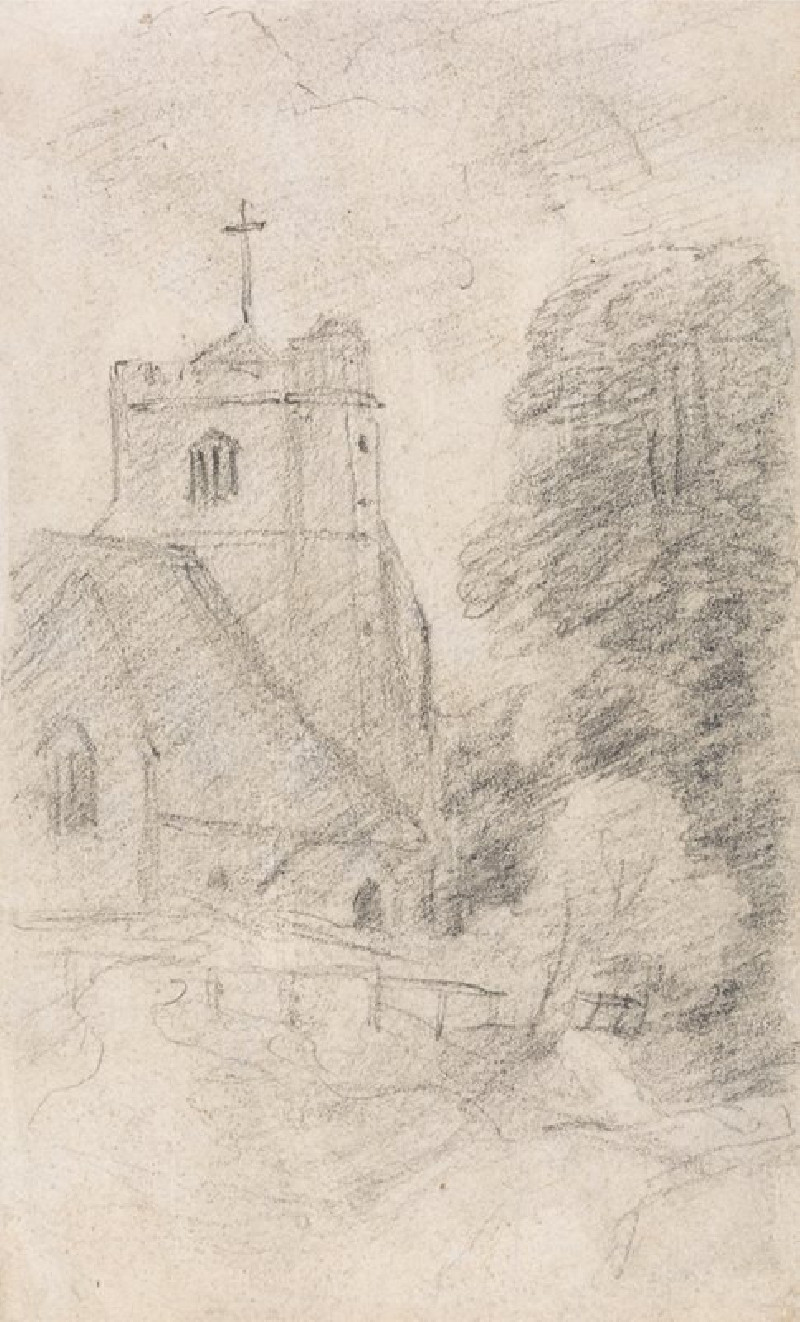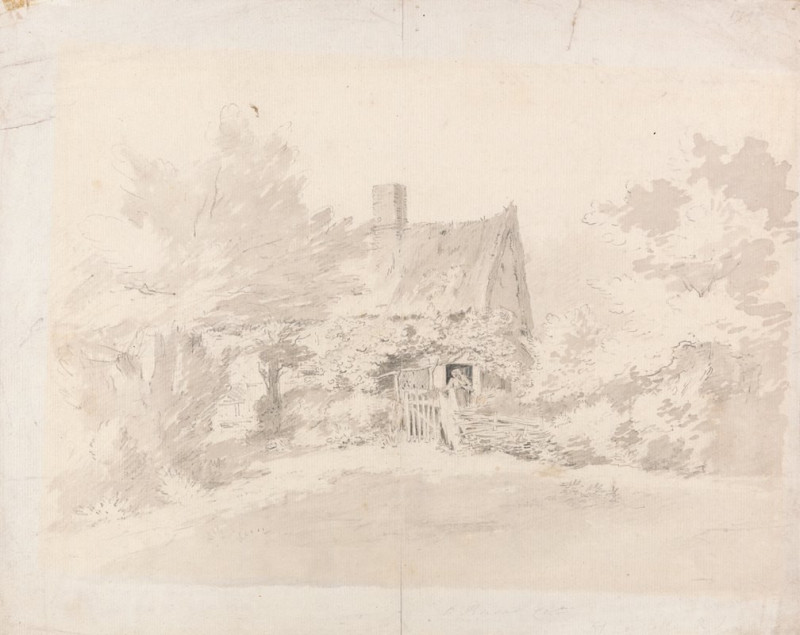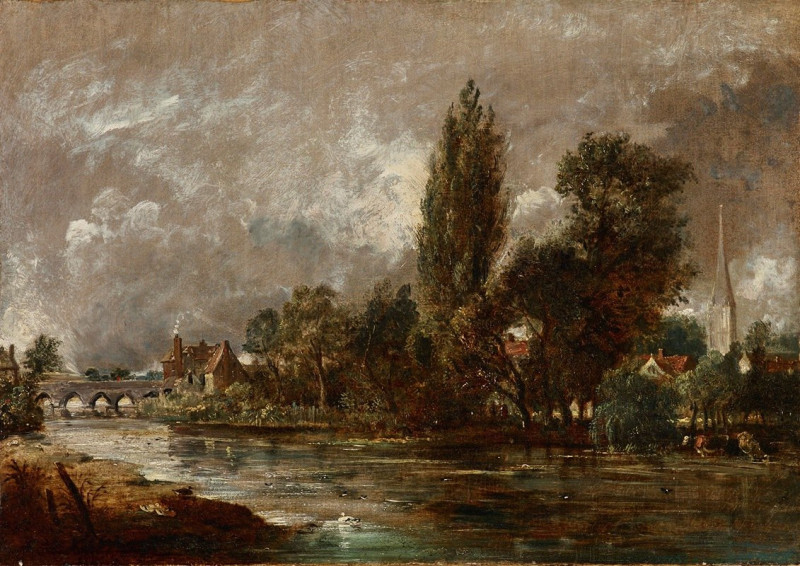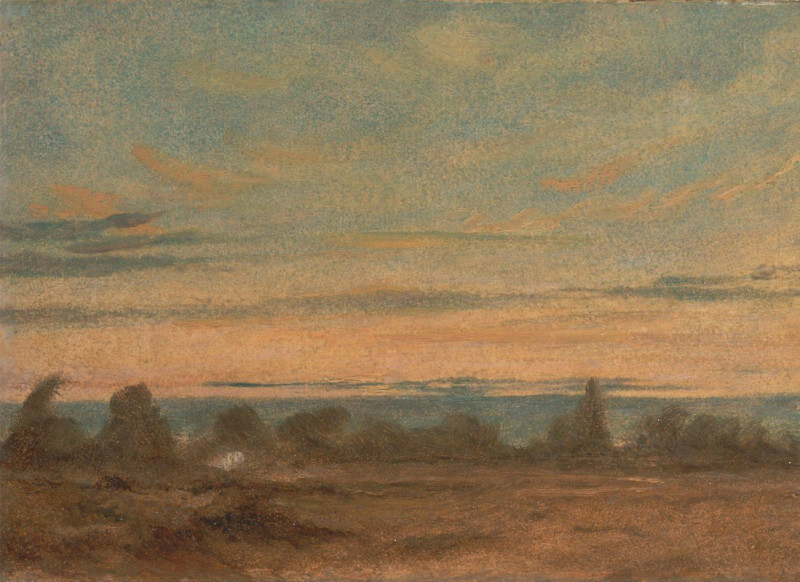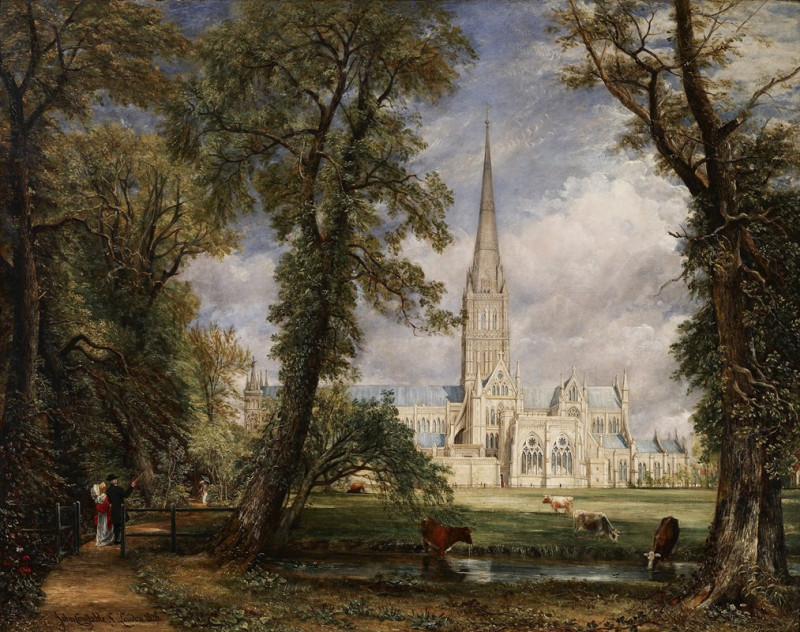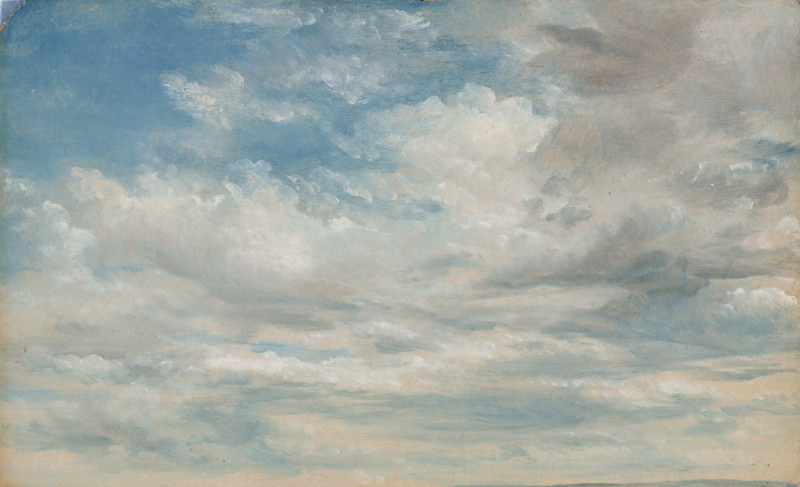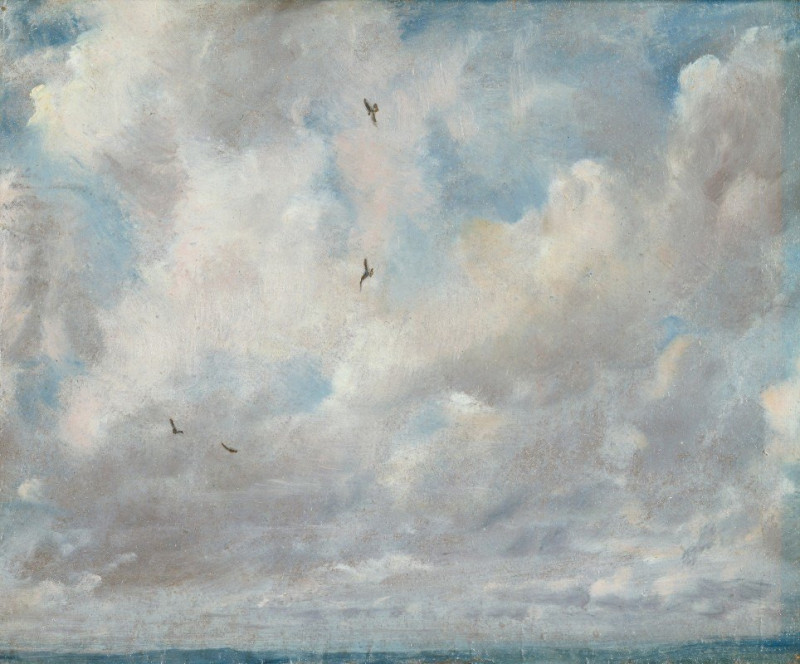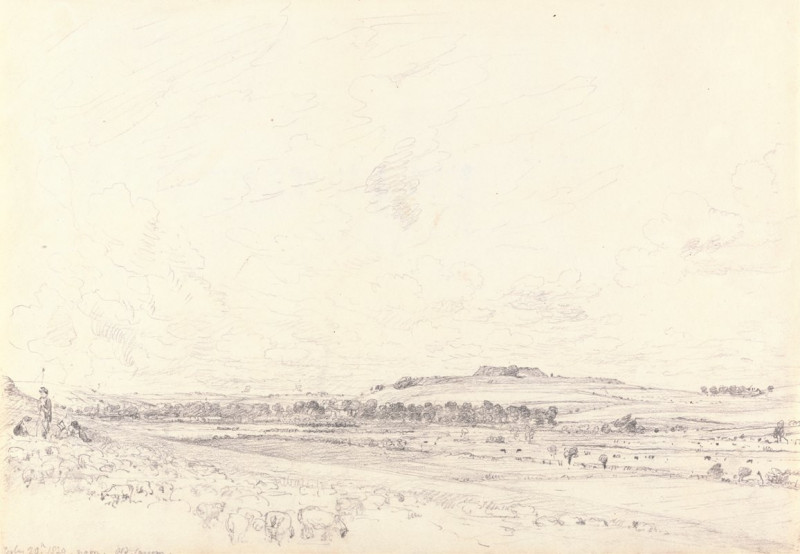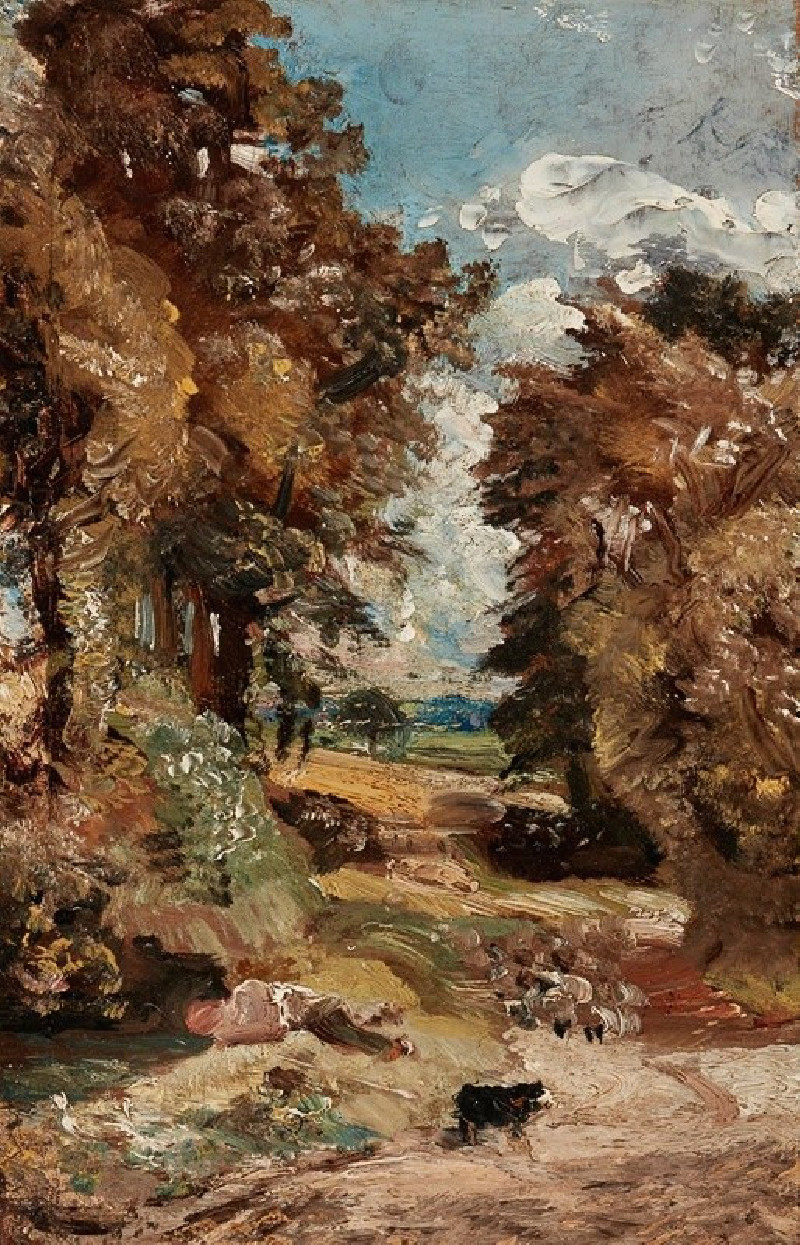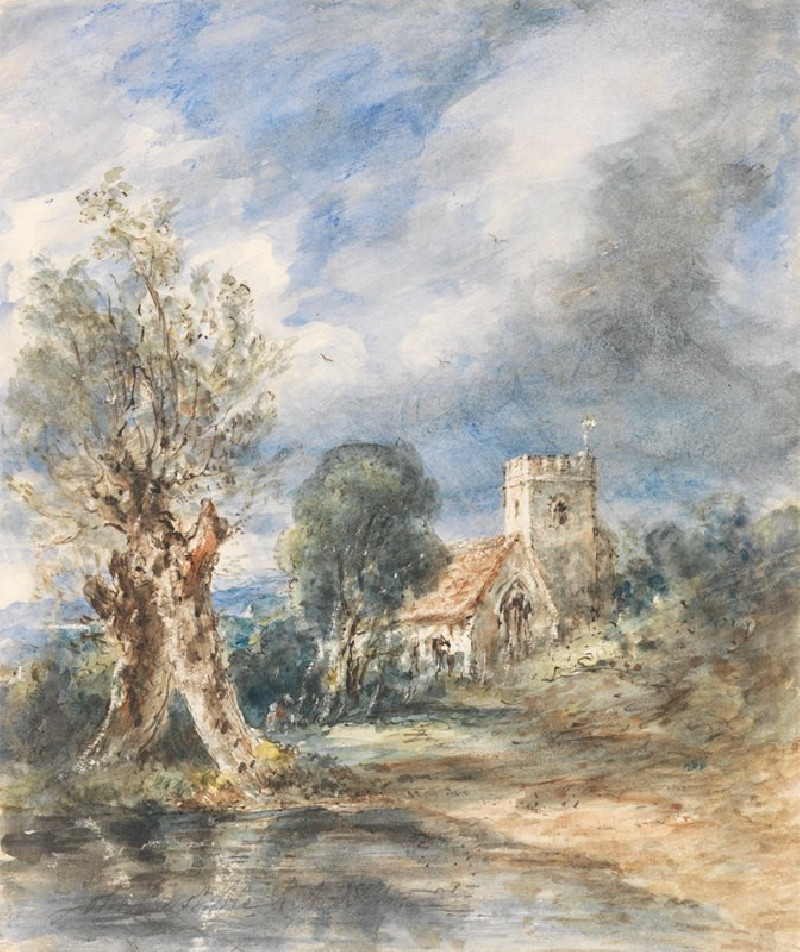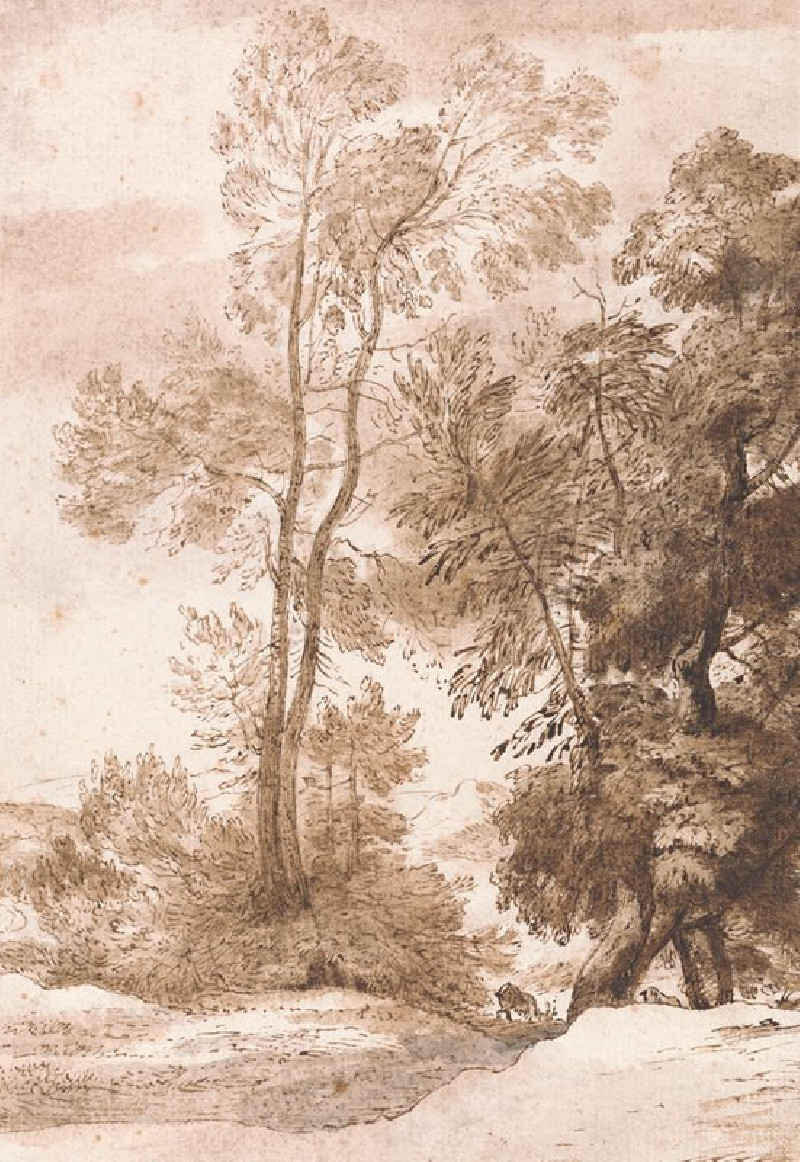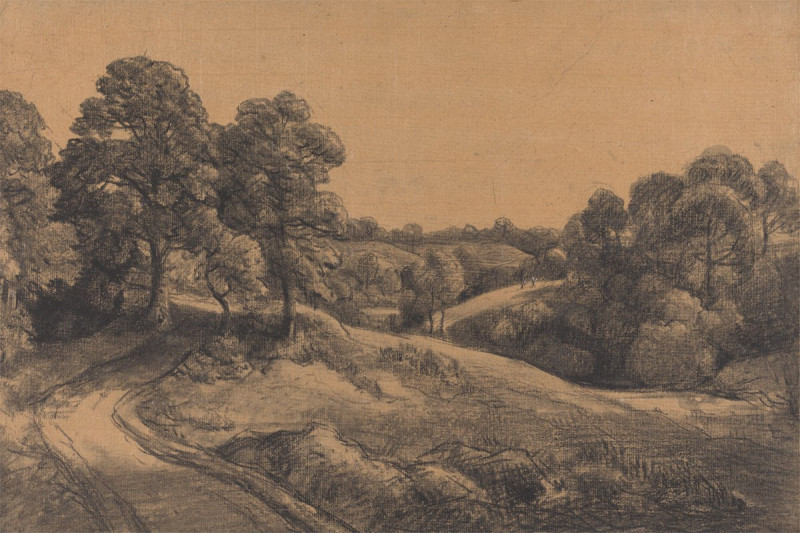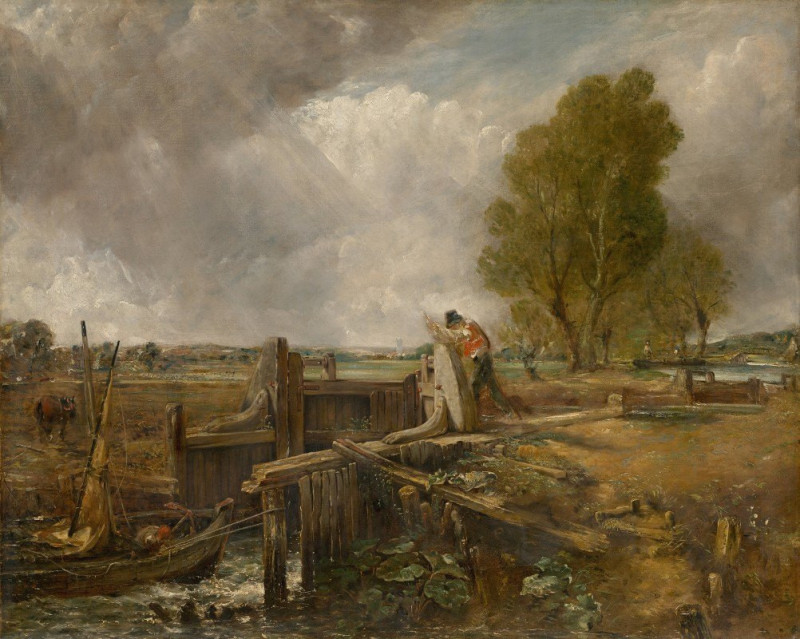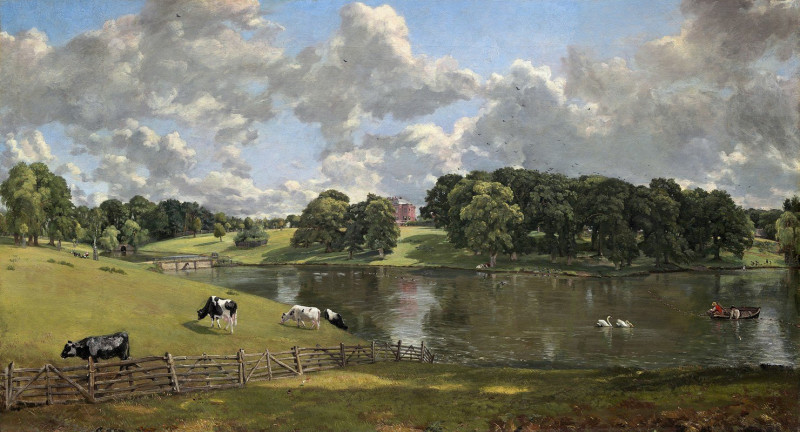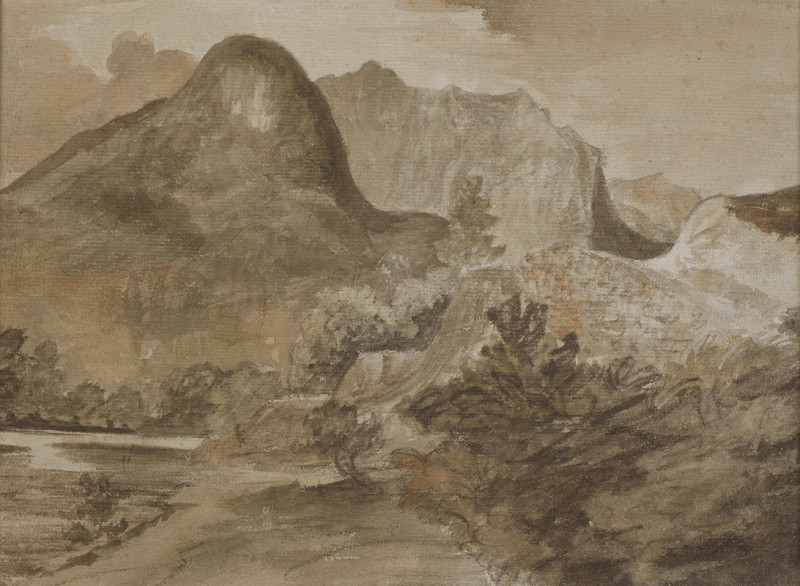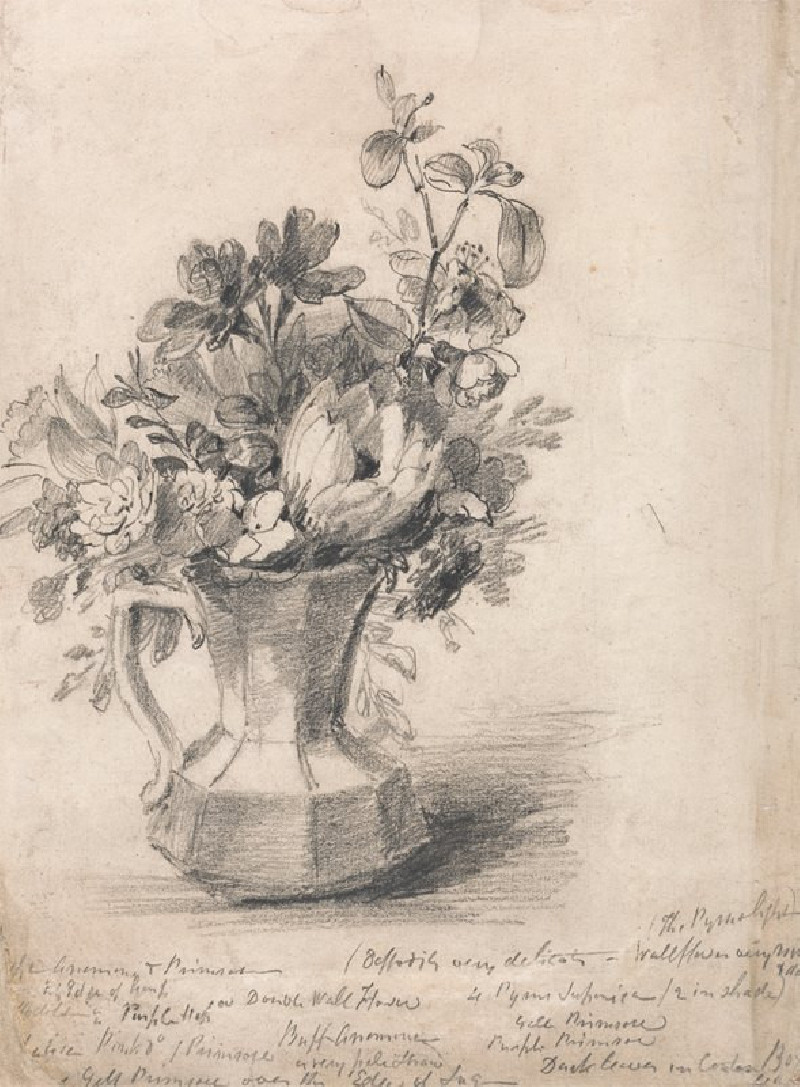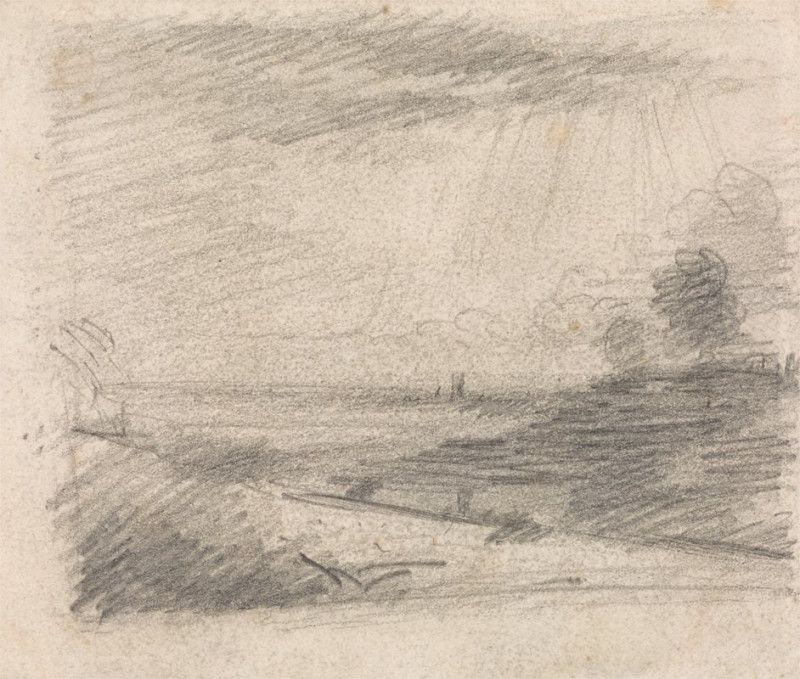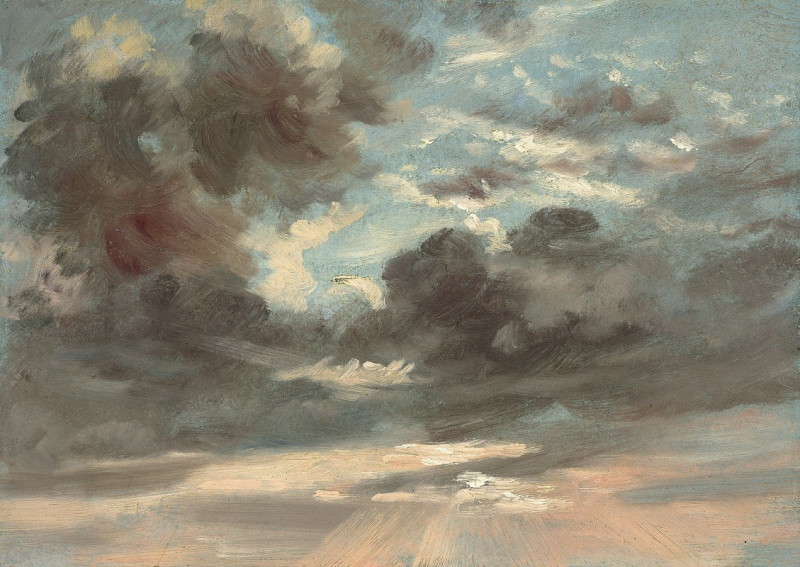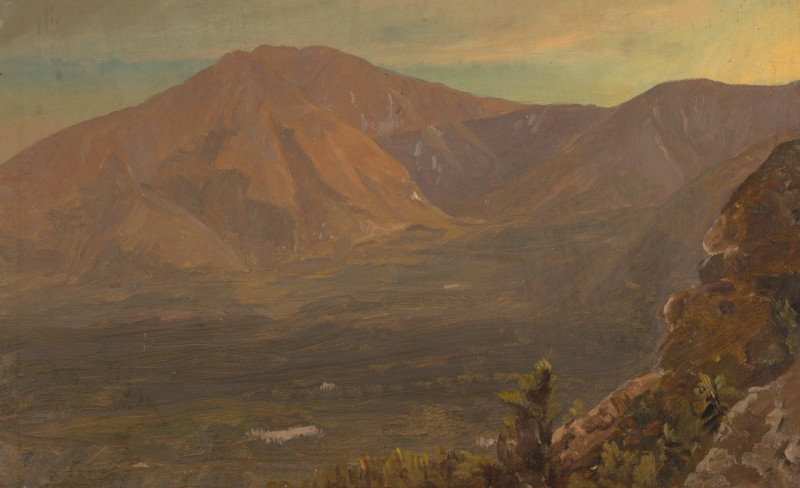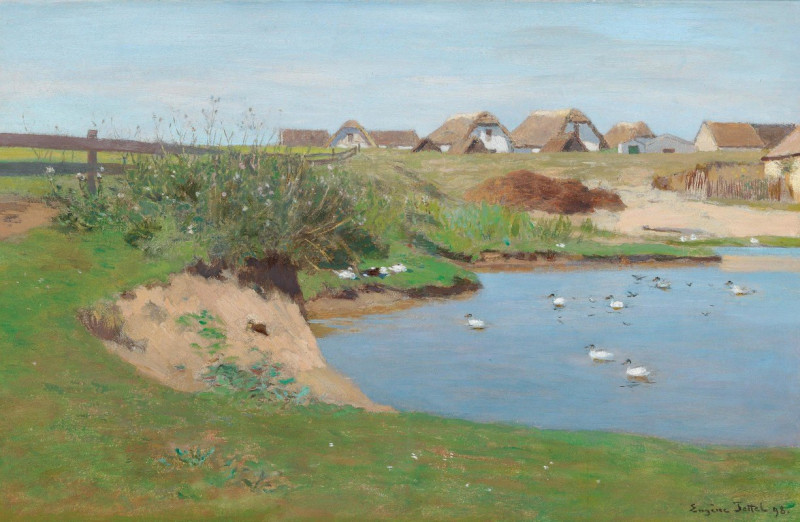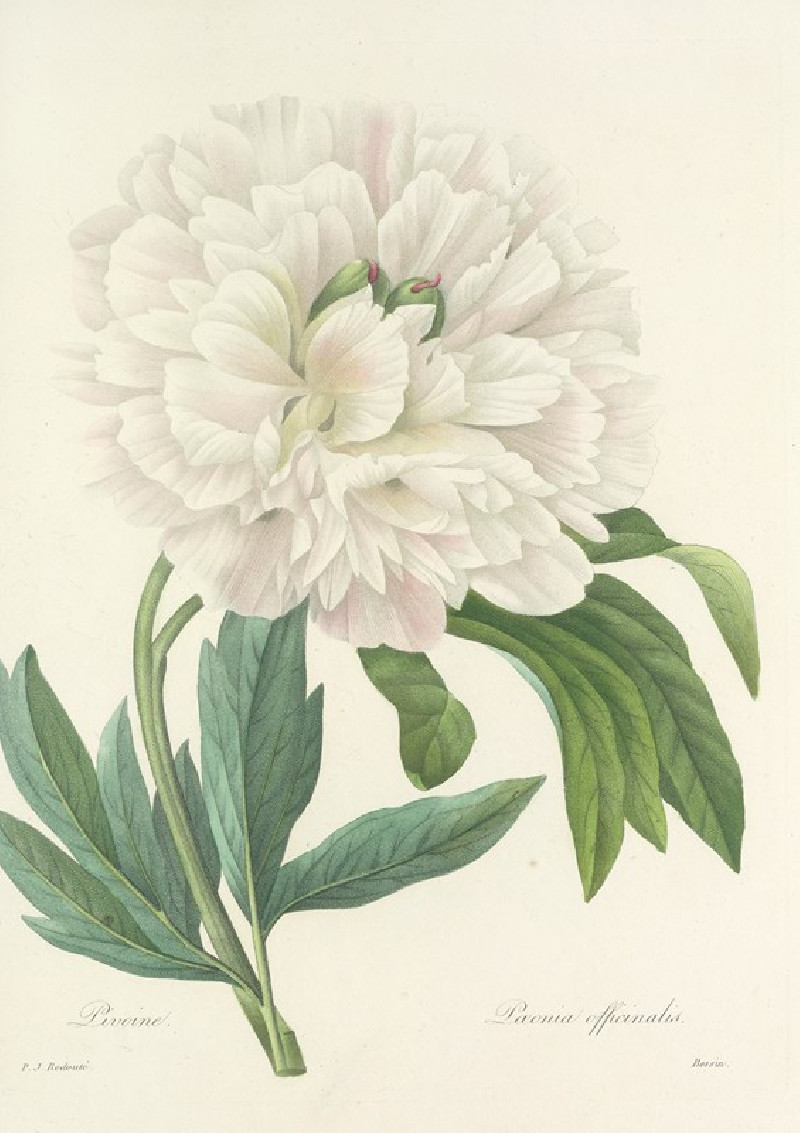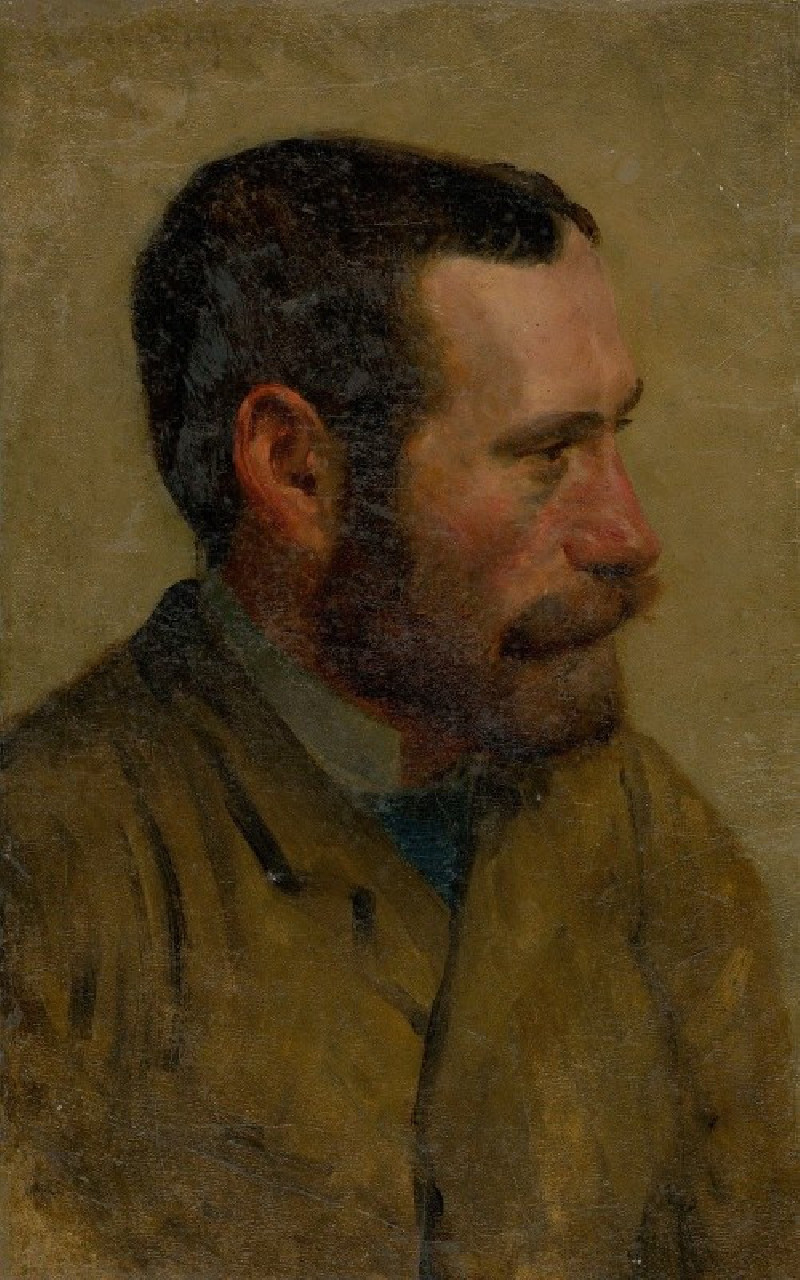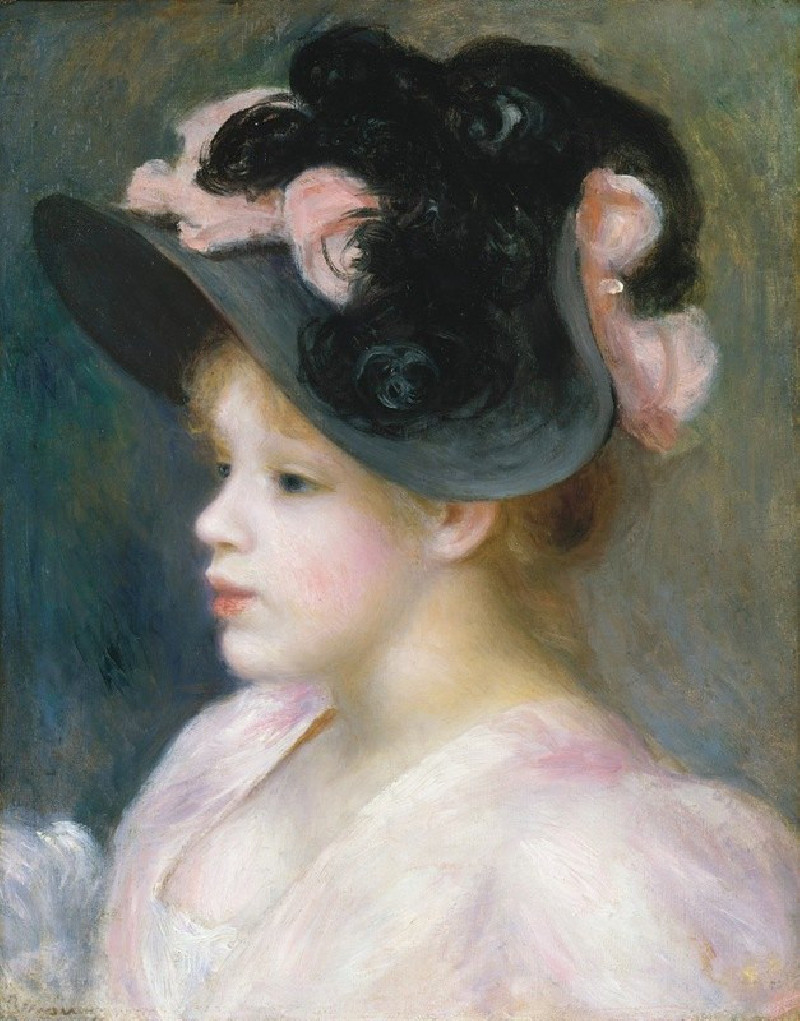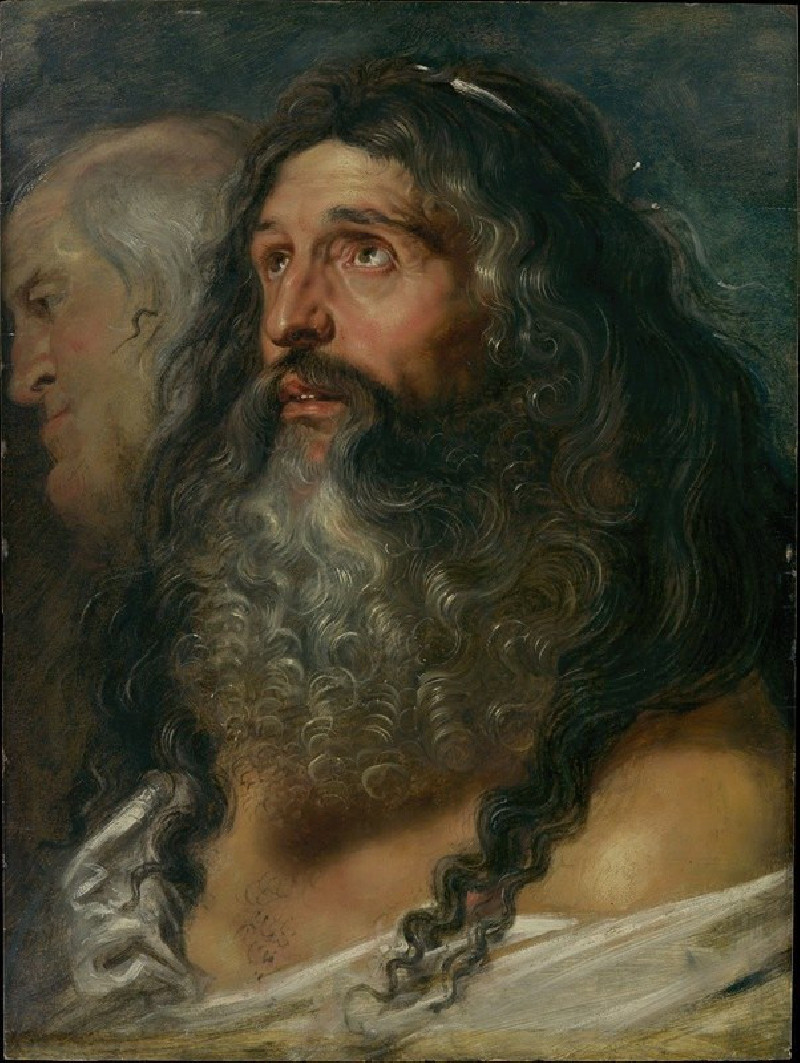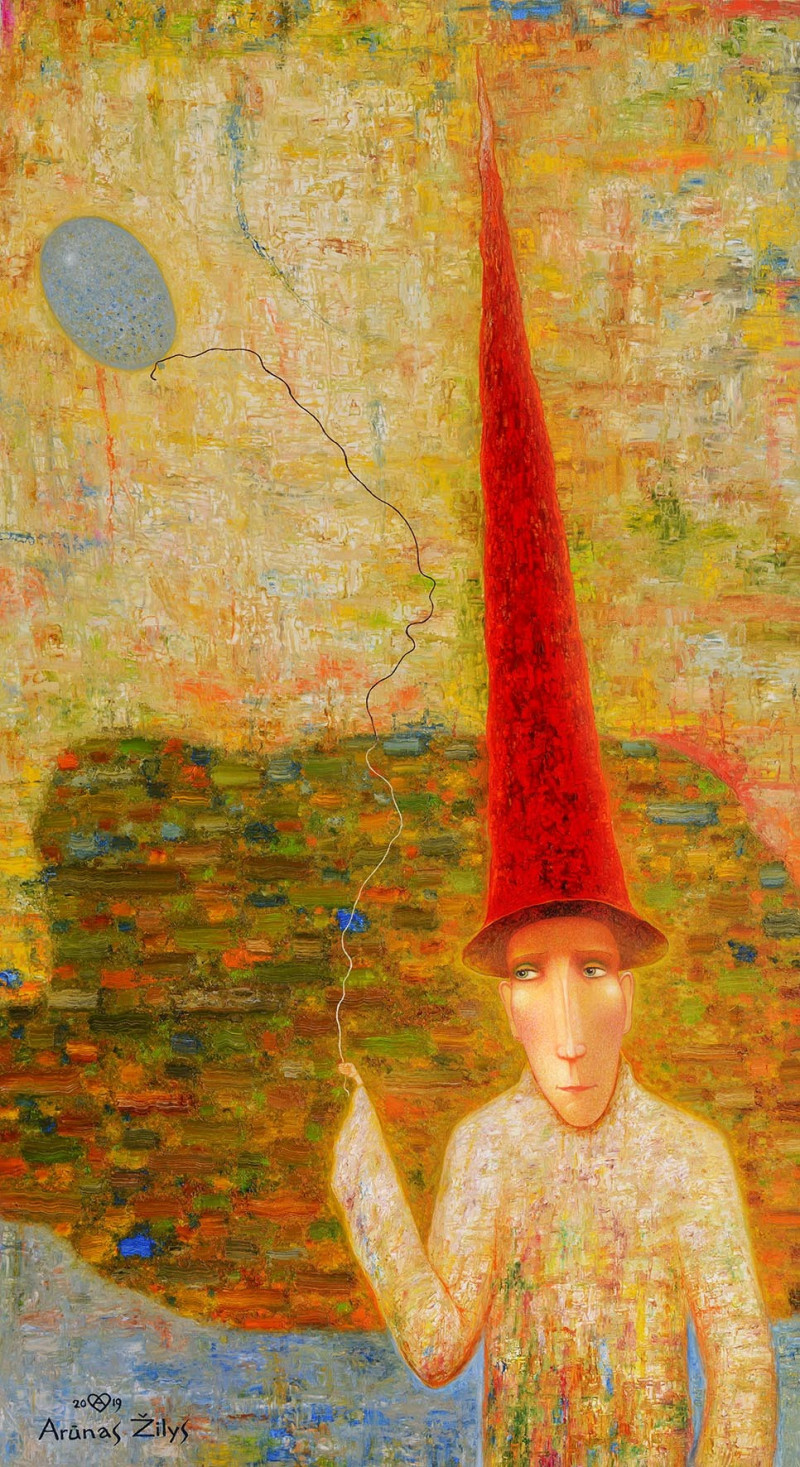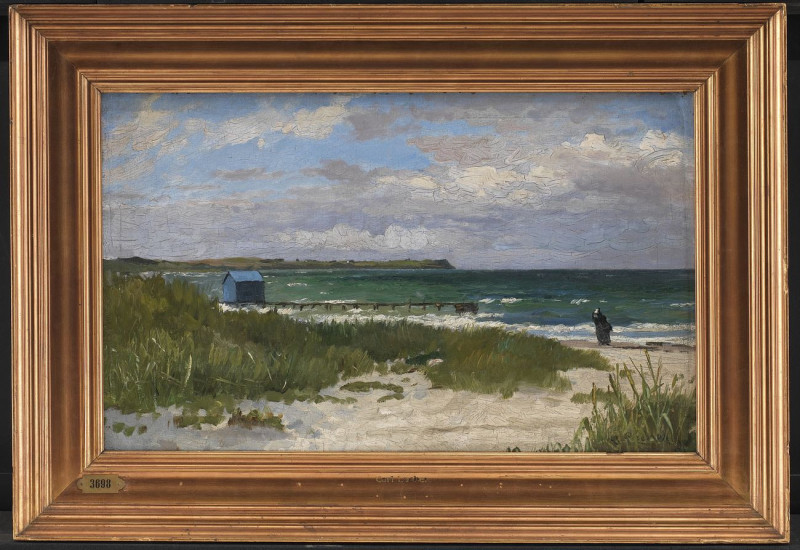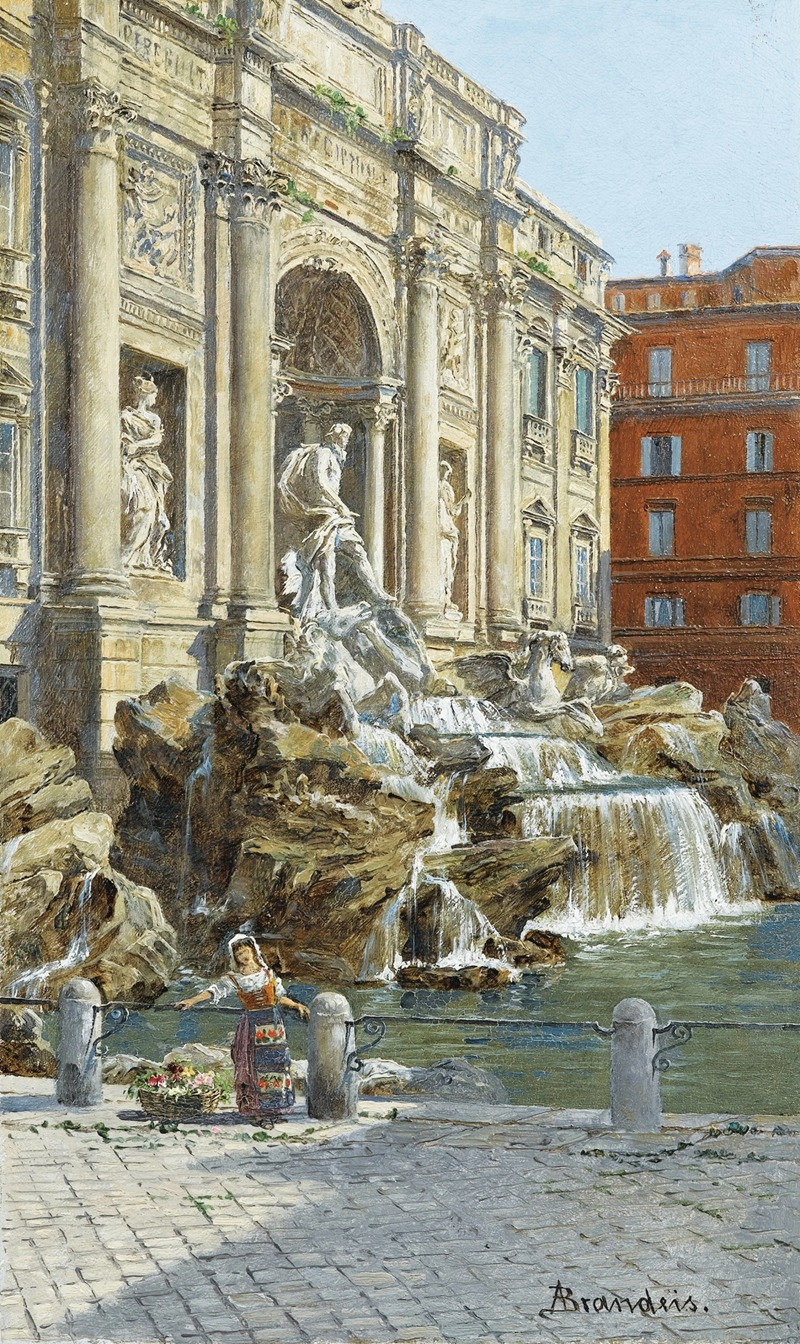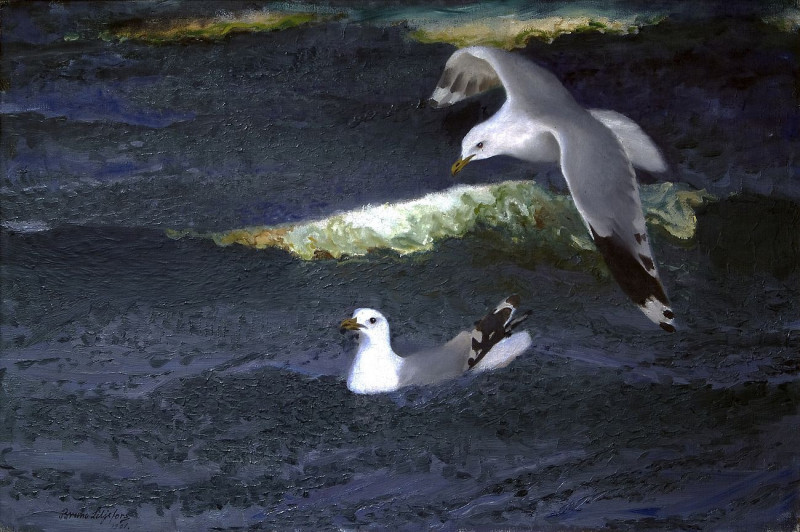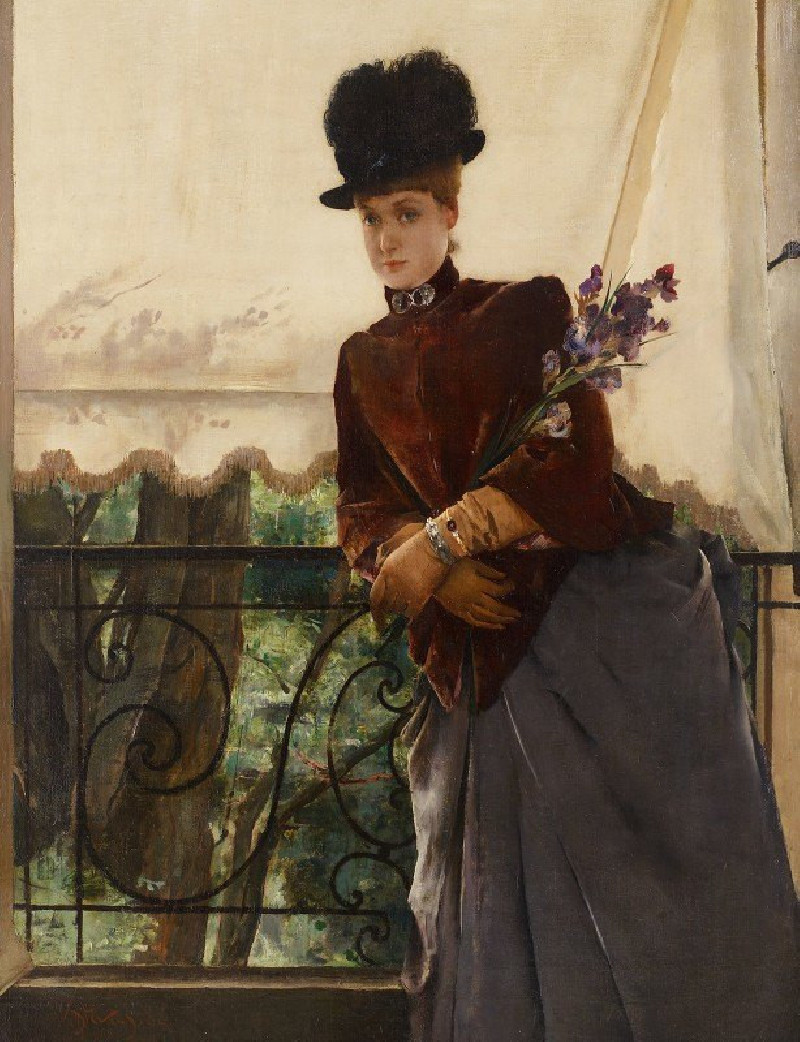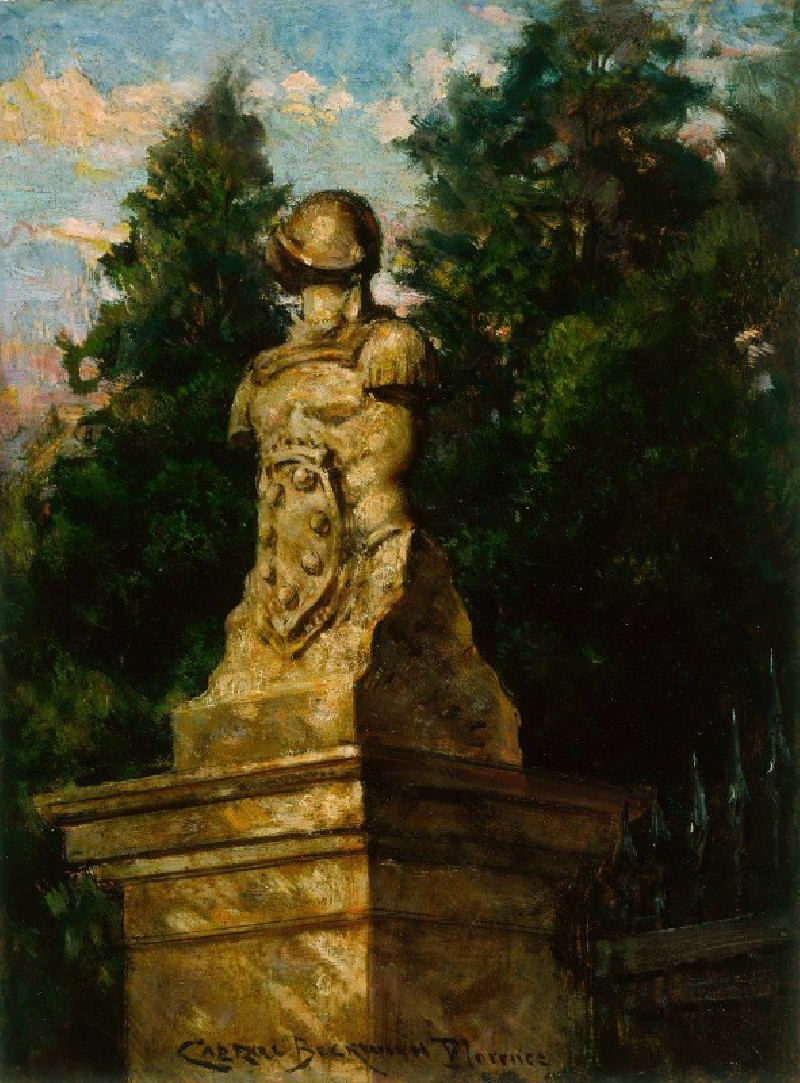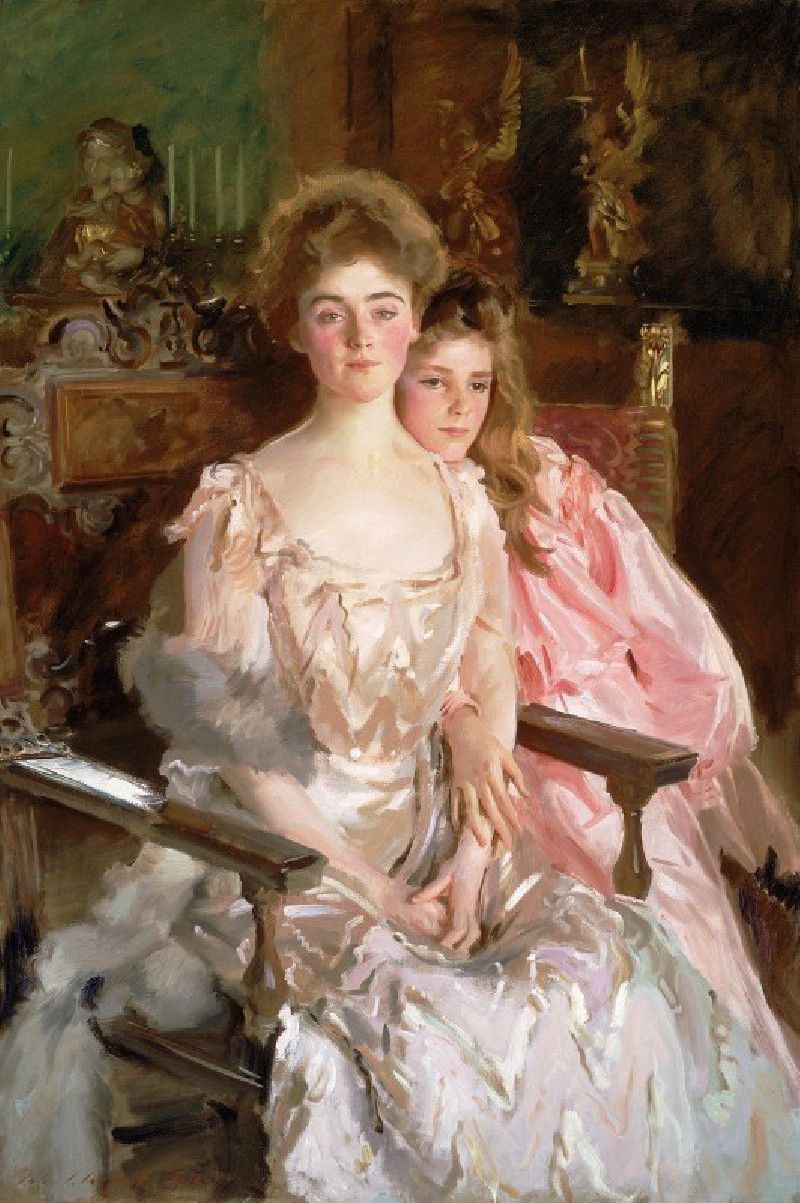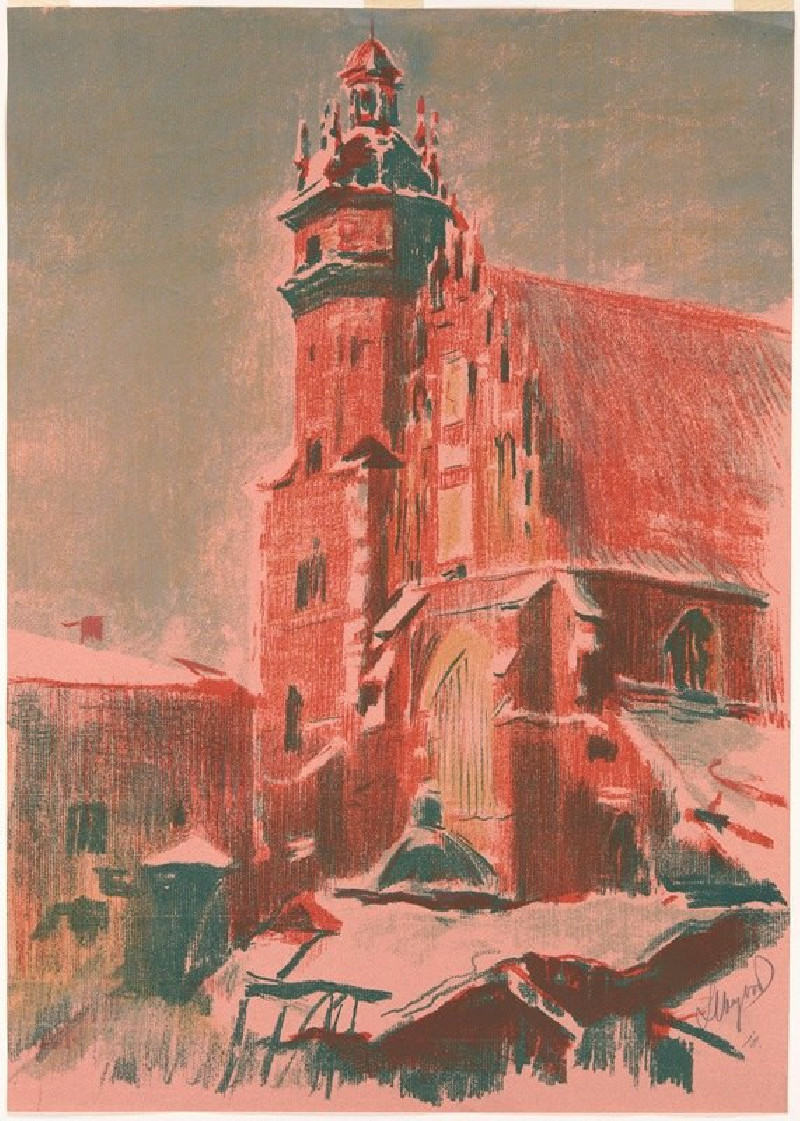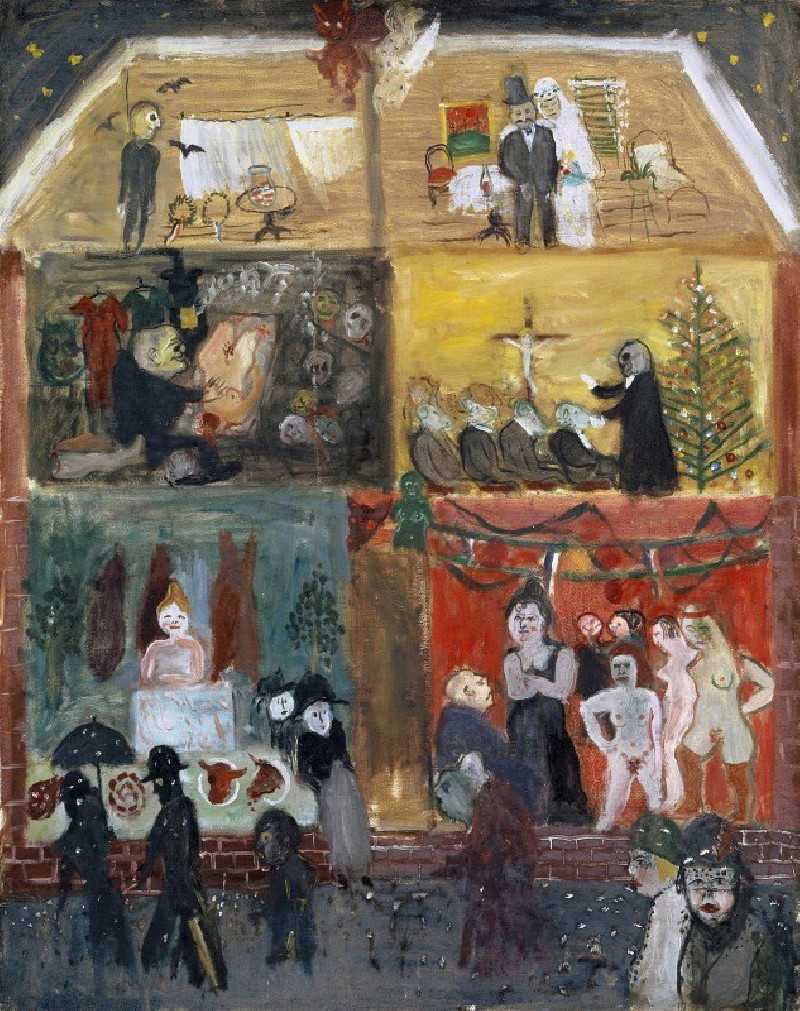The White Horse (1818-1819)
Technique: Giclée quality print
Recommended by our customers
More about this artwork
Experience the serene beauty of the English countryside through John Constable's captivating painting, "The White Horse," created between 1818 and 1819. This masterpiece is a quintessential example of Constable's deep admiration for nature and his native landscape of Suffolk.At the painting's heart, the scene is dominated by a tranquil river that mirrors the sky's shifting moods, from the gentle, drifting clouds to the subtle touches of blue and grey. To the left, the focal point of the artwork rests on the quiet activity of a white horse, delicately painted, standing by a flatboat near the river's edge. This inclusion of the horse not only lends the painting its name but also adds a dynamic element to the otherwise peaceful landscape.Surrounding the river are lush green trees and various shades of foliage that suggest the full bloom of late spring or early summer. A rustic cottage with a red roof peeks through the trees in the middle distance, suggesting human habitation and adding a charming element to the bucolic scene. Figures working around the boats and horse convey a sense of daily rural life, seamlessly integrated into the natural environment.Constable's extraordinary skill in capturing the light and atmosphere of the scene invites viewers to immerse themselves into a moment of pastoral tranquility. Every brushstroke reflects his dedication to depicting the natural elements and their interplay with human life."The White Horse" is not just a mere representation; it is a heartfelt celebration of the English countryside, resonating with anyone who finds solace and beauty in nature’s embrace.
Delivery
Returns
John Constable RA was an English landscape painter in the Romantic tradition. Born in Suffolk, he is known principally for revolutionising the genre of landscape painting with his pictures of Dedham Vale, the area surrounding his home – now known as "Constable Country" – which he invested with an intensity of affection. "I should paint my own places best", he wrote to his friend John Fisher in 1821, "painting is but another word for feeling".

